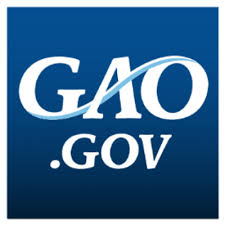Report: Uncompensated Care Payments Insufficiently Aligned With Uncompensated Costs
Some of the payments Medicare makes to hospitals to help them with their uncompensated care costs are not well-aligned with actual hospital uncompensated care costs, the U.S. Government Accountability Office has concluded.
 In a new report based on FY 2013 and FY 2014 data, the GAO found that
In a new report based on FY 2013 and FY 2014 data, the GAO found that
Medicare UC [uncompensated care] payments are not well aligned with hospital uncompensated care costs for two reasons. First, payments are largely based on hospitals’ Medicaid workload rather than actual hospital uncompensated care costs…Second, CMS [the Centers for Medicare & Medicaid Services] does not account for hospitals’ Medicaid payments that offset uncompensated care costs when making Medicare UC payments.
Medicare uncompensated payments to hospitals also are sometimes as Medicare disproportionate share (Medicare DSH) uncompensated care payments.
To address this problem, the GAO recommends that CMS
- improve alignment of Medicare UC payments with hospital uncompensated care costs
- account for Medicaid payments made when making Medicare UC payments to individual hospitals
The report notes that CMC agreed with these recommendations.
Pennsylvania’s safety-net hospitals typically receive Medicare uncompensated care payments.
To learn more about what the GAO found and what its implications might be for hospitals, go here for a link to the new GAO report Hospital Uncompensated Care: Federal Action Needed to Better Align Payments with Costs and to a summary of that report.
 Included in this edition are stories about the unexpected rebidding of HealthChoices contracts for Medicaid-covered physical health services; passage of the state’s fiscal year 2017 budget; access for Medicaid beneficiaries to drugs to treat hepatitis C; the creation by the state legislature of a task force to explore barriers to access to treatment for substance abuse; and more.
Included in this edition are stories about the unexpected rebidding of HealthChoices contracts for Medicaid-covered physical health services; passage of the state’s fiscal year 2017 budget; access for Medicaid beneficiaries to drugs to treat hepatitis C; the creation by the state legislature of a task force to explore barriers to access to treatment for substance abuse; and more.
 The 20 centers of excellence, which will be licensed by the state’s Department of Drug and Alcohol Programs, are expected to be open by October 1.
The 20 centers of excellence, which will be licensed by the state’s Department of Drug and Alcohol Programs, are expected to be open by October 1. The state’s FY 2017 budget restores, to FY 2016 levels, Medicaid OB/NICU, burn center, trauma center, and critical access hospital payments. All had been targeted for reduction or elimination in the governor’s budget proposal.
The state’s FY 2017 budget restores, to FY 2016 levels, Medicaid OB/NICU, burn center, trauma center, and critical access hospital payments. All had been targeted for reduction or elimination in the governor’s budget proposal.
 Among other matters, the 764-page proposed regulation addresses:
Among other matters, the 764-page proposed regulation addresses: